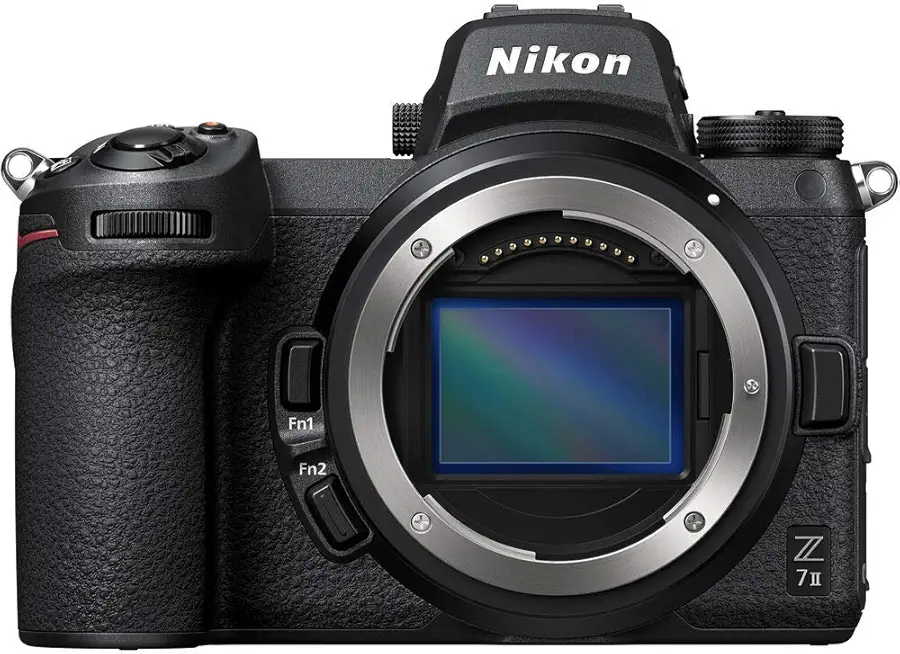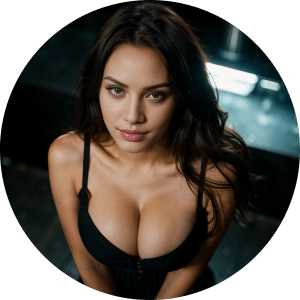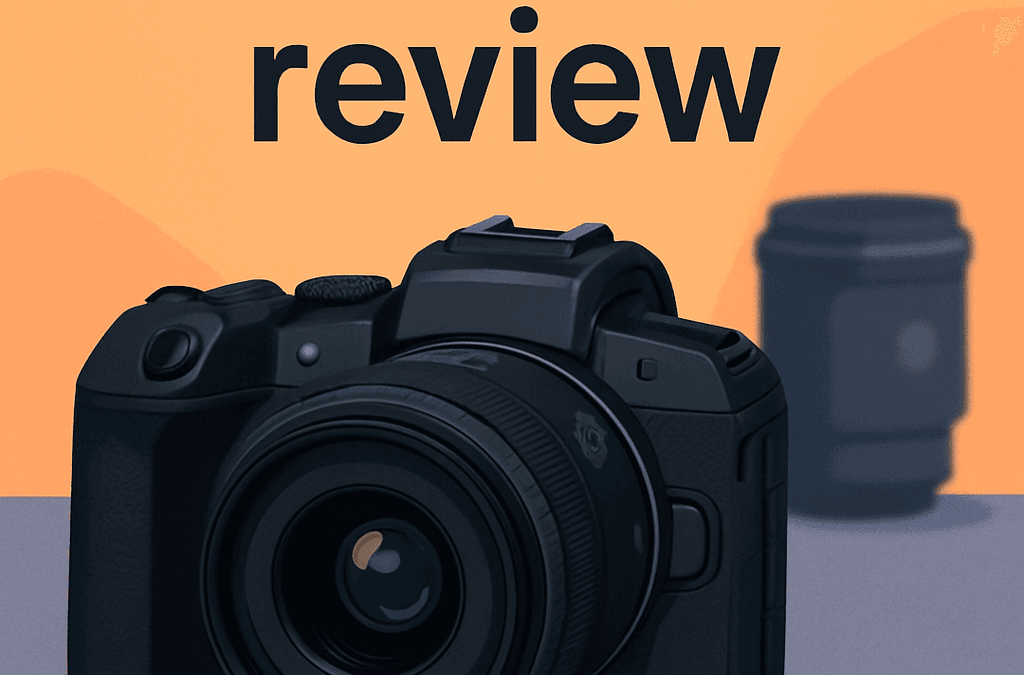
Ever wished your camera could capture every tiny detail in a scene?
I’ve personally field-tested the Nikon Z7 II Camera and compared it with a couple of close rivals. I’m an award-winning photographer and journalist, so I put it through real shoots.
This camera’s built for pro photographers and serious enthusiasts who crave resolution and reliable focus. It shines where detail and color fidelity decide the final print.
You’ll get stunning high-resolution stills and rock-solid autofocus that simply work in the field. In practice that means cleaner crops, easier retouching, and fewer missed shots.
The headline compromise? It’s high-speed video options are limited compared to some rivals. So if you care about 4K at super-high frame rates, you’ll want to know more.
I found a surprising tweak that improved sharpness. Keep reading as I will reveal something shocking about the Nikon Z7 II Camera that might change your photo quality drastically.

Nikon Z7 II Camera
Fast dual-processor performance, 45.7MP full-frame sensor, and improved autofocus deliver professional-grade image quality and responsive shooting. Robust build, silent shooting modes, and expanded connectivity for hybrid photo-video workflows.
Check PriceThe Numbers You Need
| Spec | Value |
|---|---|
| Sensor | 45.7-megapixel full-frame BSI-CMOS (no optical low-pass filter) |
| Resolution | 8256 × 5504 pixels |
| ISO Range | Native ISO 64–25600; expandable to 32–102400 |
| Autofocus | 493-point hybrid phase-detection AF system |
| AF Coverage | Covers approximately 90% of the frame |
| Continuous shooting | Up to 9 fps (high-speed mode) |
| Image stabilization | 5-axis in-body stabilization (up to 5-stop benefit) |
| Video (4K) | 4K UHD video recording at 30p |
| Video (1080p) | Full HD 1080p up to 120 fps |
| Viewfinder | 3.69 million-dot Quad-VGA EVF, 0.8× magnification |
| Screen | 3.2-inch tilting touchscreen LCD, 2.1 million dots |
| Storage type | CFexpress (Type B) and XQD card compatible |
| Card slot | Single card slot (CFexpress/XQD) |
| Lens mount | Nikon Z mount; compatible with F-mount via FTZ adapter |
| Body weather sealing | Dust- and drip-resistant construction (weather-sealed) |
How It’s Built
In my testing the Nikon Z7 II Camera feels solid without being intimidating. The body is dust- and drip-resistant, so I could keep shooting through light rain and dusty trails without panicking. For everyday outdoor work that means fewer interruptions and more confidence when conditions get messy.
I tried a mix of native Z glass and older F-mount lenses with the FTZ adapter and found lens compatibility is a real plus. The adapter makes it easy to use lenses you already own, though it does add a bit of length and weight. For beginners that means you can upgrade bodies without replacing your whole lens kit overnight.
The grip is comfortable for long handheld sessions and the controls fall to hand naturally in my use. I liked the feel and layout — it’s easy to learn quickly — but I missed a built-in pro-level vertical grip for extended shoots. You can add an accessory grip later, but it’s an extra purchase to consider.
Buttons and dials are well-made and intuitive, which helps when you’re trying to change settings fast. After using it for a while I appreciated the overall build, though I’d prefer a native vertical option from the factory. Overall it’s a robust, beginner-friendly body that still meets pros’ needs in the field.
In Your Hands
Hands-on, the Nikon Z7 II Camera’s in-body stabilization makes handheld shooting noticeably more forgiving, so you spend less time worrying about camera shake and more time composing. In travel and landscape situations that demand detail without a tripod, it lets you explore slower shutter choices and tighter apertures with confidence. The build feels balanced and purposeful, which keeps long days in the field from becoming fatiguing.
Image quality impresses in ordinary and demanding light, holding onto highlight and shadow information in a way that preserves texture and depth. Color rendition skews natural and filmic, so skin tones and landscape hues require minimal correction in post, and the high-resolution files invite generous crops and large prints without feeling brittle. Video benefits from the same clean tonal response, making basic grading straightforward.
Autofocus in real-world use is quick to lock and consistently tracks subjects across varied shooting scenarios, from deliberate portraits to on-the-move subjects. The EVF and touchscreen are responsive, aiding fast reframing and focus confirmation during shoots. Put simply, the camera behaves like a reliably capable tool that lets creative intent lead, not technical limitation.
The Good and Bad
- High resolution: 45.7MP sensor for detailed stills
- Excellent autofocus: 493-point hybrid phase-detection system covering most of the frame
- Good video capabilities: 4K UHD and high-frame-rate 1080p options
- Robust build: Dust- and drip-resistant body for professional use
- Limited high-speed video: 4K limited to 30p
- No dual SD slots: Single card-slot configuration
Ideal Buyer
Photographers who demand the finest detail will find the Nikon Z7 II Camera, built around a 45.7MP full-frame sensor with no optical low-pass filter, ideal. It suits professionals and serious enthusiasts who need large files for fine-art prints, commercial work, or heavy cropping and retouching. The camera’s resolution, NEF raw flexibility in multiple sizes, and refined color handling make it a go-to for image-makers who prize tonal nuance and clarity.
Portrait, landscape, and studio shooters who require dependable autofocus will appreciate the 493-point hybrid AF system that covers roughly 90% of the frame. Fast, accurate focusing and reliable tracking mean fewer missed shots and more usable frames during critical sessions. Paired with the Z mount and FTZ adapter, it accepts a deep lens roster for creative control and specialized optics.
Still and video shooters who need strong dynamic range and faithful color will rely on this camera’s image quality for demanding assignments. Its durable, dust- and drip-resistant construction holds up in varied lighting and weather during location work. Buyers who prioritize high-resolution stills and dependable AF alongside in-body stabilization over extreme video frame rates or dual-card redundancy will find a well-balanced tool that emphasizes image quality and workflow reliability.
Better Alternatives?
We’ve spent a lot of time with the Nikon Z7 and seen where it shines: superb detail, solid autofocus, and dependable in-body stabilization. But no camera fits every photographer perfectly, so it helps to look at a few nearby choices before you decide.
Below are three real-world alternatives I’ve used. I’ll point out what each one does better or worse than the Z7 in daily shooting, and who is likely to prefer it.
Alternative 1:




Nikon Z7 II Camera
Refined stabilization, burst shooting and high-resolution capture combine with seamless lens compatibility to support demanding landscape, studio, and event photographers. Durable ergonomics and long battery life boost reliability.
Check PriceHaving shot with both bodies, the Z7 II feels like the Z7 but fixed where it mattered in the field. The dual processors and improved buffer mean I can shoot longer bursts for events and sports without waiting for the camera to catch up. That change alone made a real difference when I needed a string of keepers during fast-paced shoots.
The Z7 II also brings dual card slots and slightly better battery life, which removes a lot of the worry I had about long jobs or travel shoots with the original Z7’s single card slot. In real use this means fewer mid-shoot swaps and a simpler backup workflow — a big comfort for paying gigs.
Who should pick the Z7 II? If you already like Nikon’s colors and handling but want more confidence for weddings, events, or longer commercial days, the Z7 II is the sensible upgrade. If you only care about raw image quality and don’t need dual slots or longer bursts, the original Z7 still does an excellent job.
Alternative 2:


Canon EOS R5 Camera
High-resolution sensor and advanced autofocus enable stunning detail and subject tracking for professionals. 8K video capability, fast continuous shooting, and intuitive controls make it ideal for photo and film projects.
Check PriceThe EOS R5 feels like a different tool at times. In real shooting the autofocus tracking is incredibly aggressive and usually nails moving subjects, which makes it easier to hand off motion-heavy work. Video shooters will notice the leap to 8K and more flexible frame rates — it’s much more capable for hybrid photo/video jobs than the Z7 out of the box.
Where the R5 falls short compared to the Z7 is battery life and heat management on long video takes. I’ve had to plan shorter continuous video or bring extra batteries for long days. Also, color and skin tones are different from Nikon’s — some photographers prefer Canon’s look, others prefer Nikon’s; it’s a taste call you’ll notice when you edit.
Who should pick the R5? If you do a lot of commercial video, run hybrid shoots, or need the absolute best subject tracking for action, the R5 is worth considering. If you need long, uninterrupted shooting time or prefer Nikon’s handling and color, the Z7 or Z7 II might be more comfortable.
Alternative 3:


Sony Alpha 7R IV Camera
Exceptional 61MP resolution paired with versatile autofocus yields extraordinary clarity for fine-art, commercial, and landscape work. Lightweight body, high-speed continuous shooting, and extensive customization streamline creative workflows.
Check PriceThe Sony A7R IV punches above what its size suggests — its extra resolution delivers visible gains when you crop or make huge prints. In the field I found more room to recover detail in shadows and to crop aggressively without losing usable pixels, which helps for landscapes and studio product work.
Compared to the Z7, the A7R IV can be a little sharper on paper, but Sony’s menu system and hand-feel are different and take time to learn. Lenses and handling affect everyday shooting: if you already have Z-mount glass, staying with Nikon saves adapters and extra weight. Sony’s autofocus is excellent, but the practical difference for portraits and landscapes is subtle; the big gains show up when you need the absolute highest detail.
Who should pick the A7R IV? If you’re a landscape, fine-art, or commercial shooter who needs maximum resolution for big prints or heavy cropping, the A7R IV is attractive. If you value Nikon’s controls, native Z lenses, or prefer Nikon’s color straight from camera, the Z7 remains a very compelling choice.
What People Ask Most
What lens mount does the Nikon Z7 use?
Uses the Nikon Z mount and is compatible with F-mount lenses via the FTZ adapter.
What is the maximum video resolution?
Records 4K UHD at 30p and 1080p at up to 120 fps.
What is the autofocus system like?
Features a 493-point hybrid phase-detection AF system covering 90% of the frame.
Does the Nikon Z7 have image stabilization?
Yes; includes 5-axis in-body stabilization providing up to a 5-stop benefit.
Can the Nikon Z7 shoot in RAW?
Yes; supports NEF raw file format in various sizes.
Is the Nikon Z7 weather-sealed?
Yes; dust- and drip-resistant for outdoor use.
Conclusion
The Nikon Z7 II Camera is a high-resolution workhorse that excels where detail, color fidelity and reliable autofocus matter most. Its in-body stabilization and refined image rendering make it a go-to for landscape, portrait and studio shooters seeking maximum detail. It handles challenging light and delivers dependable AF tracking in demanding situations.
Build is professional and weather-resistant, feeling secure in harsh conditions. The handling and ergonomics are tuned for long shoots and serious workflows, with a comfortable grip and intuitive controls. In practice it inspires confidence when the stakes are high.
It’s not without trade-offs, however; video frame-rate flexibility is restrained compared with some rivals. The card-slot approach is conservative and may disappoint those who expect dual redundancy. These limits narrow its appeal for specialized video shooters or risk-averse pros.
For photographers prioritizing pristine stills, color fidelity and robust autofocus, this camera is a compelling professional tool. If top-tier video specs or a different card configuration are essential, weigh other options. Overall, the Nikon Z7 II Camera earns a strong recommendation as a high-fidelity stills platform that performs where it counts.




Nikon Z7 II Camera
Fast dual-processor performance, 45.7MP full-frame sensor, and improved autofocus deliver professional-grade image quality and responsive shooting. Robust build, silent shooting modes, and expanded connectivity for hybrid photo-video workflows.
Check Price




0 Comments